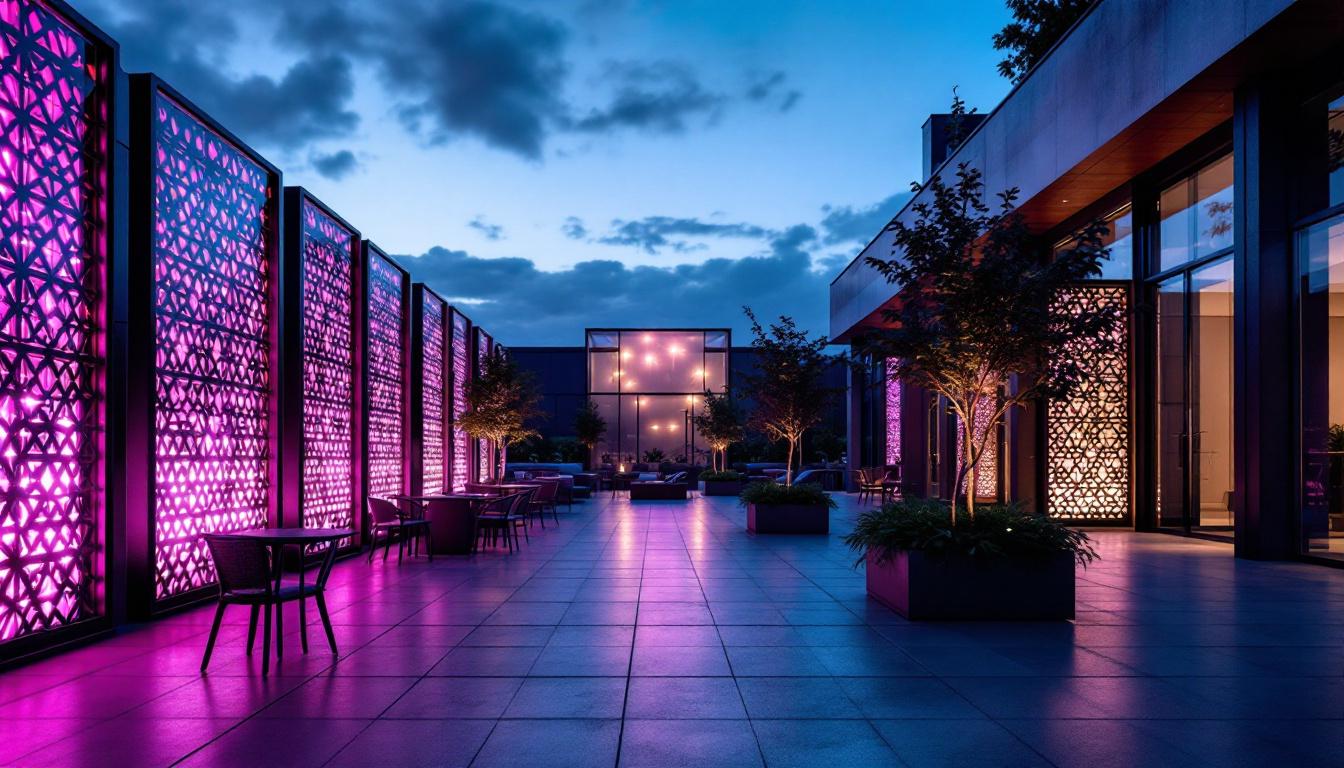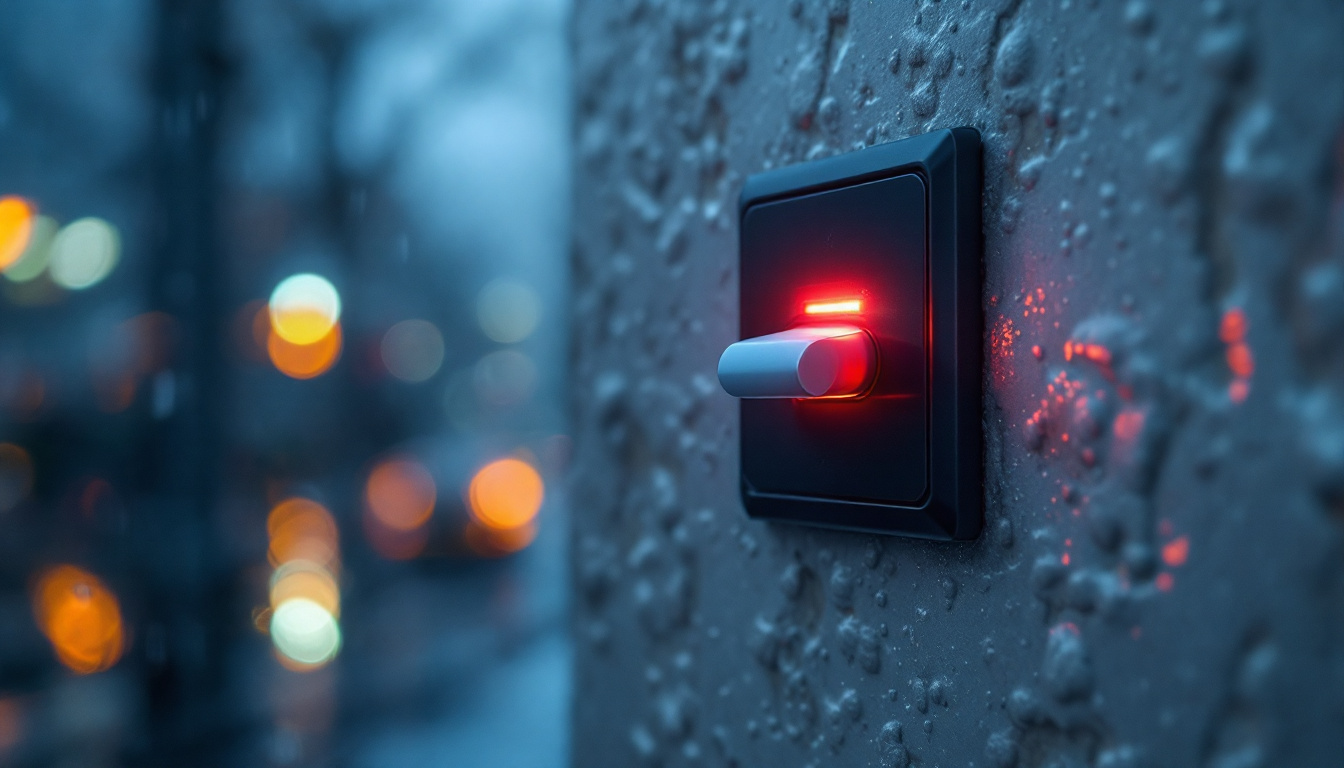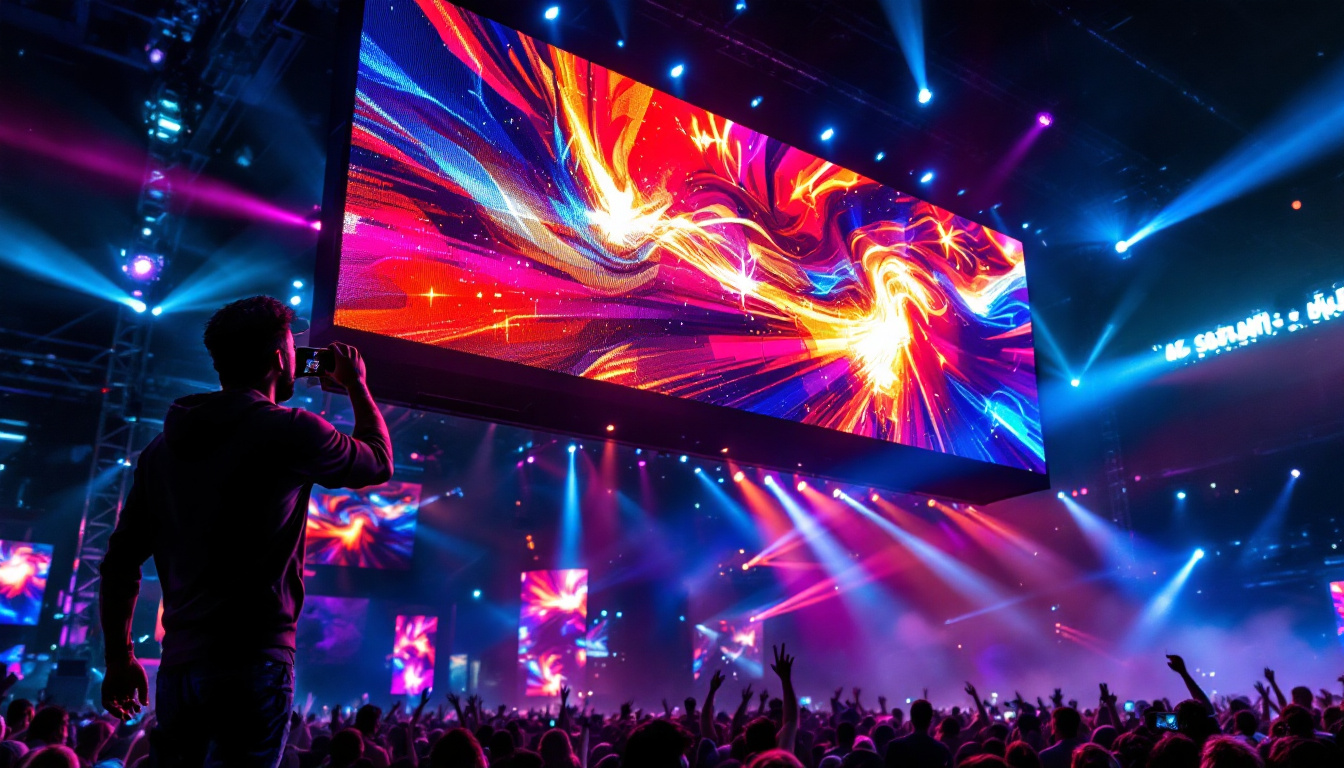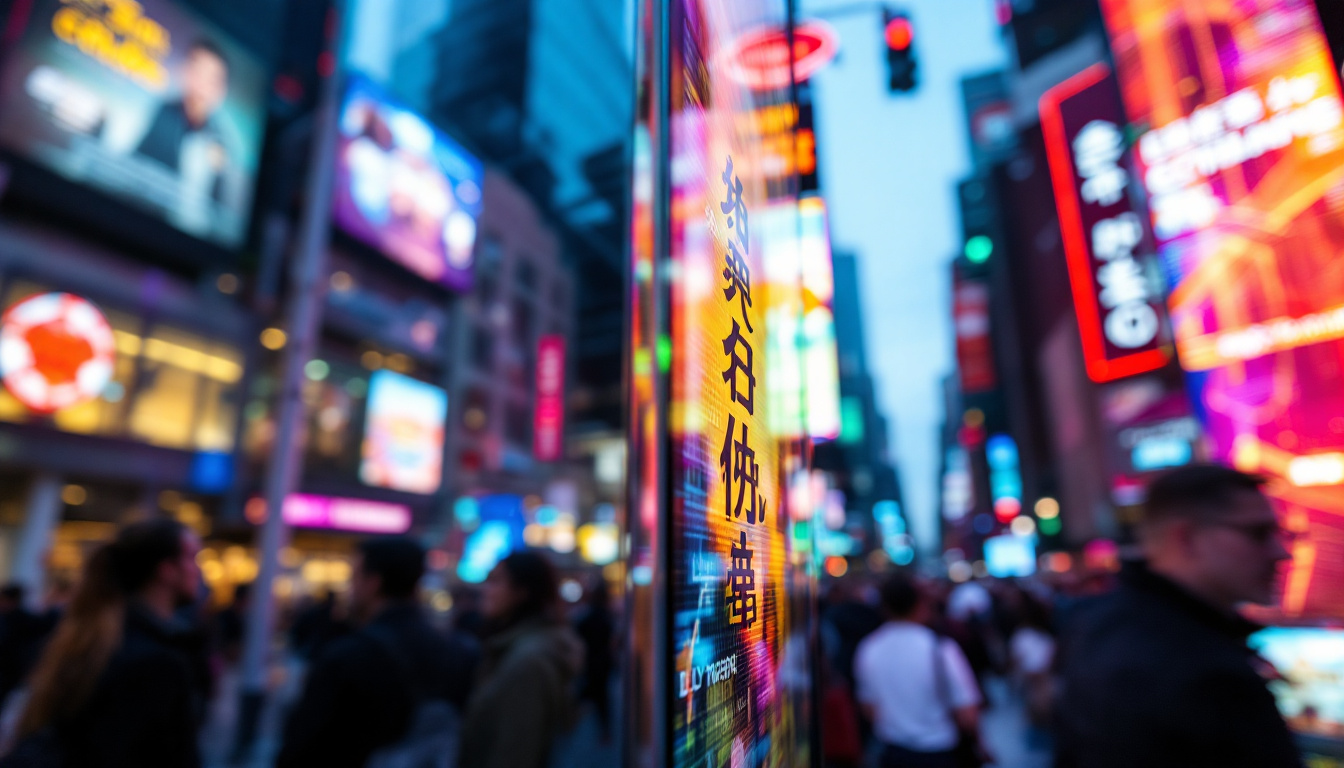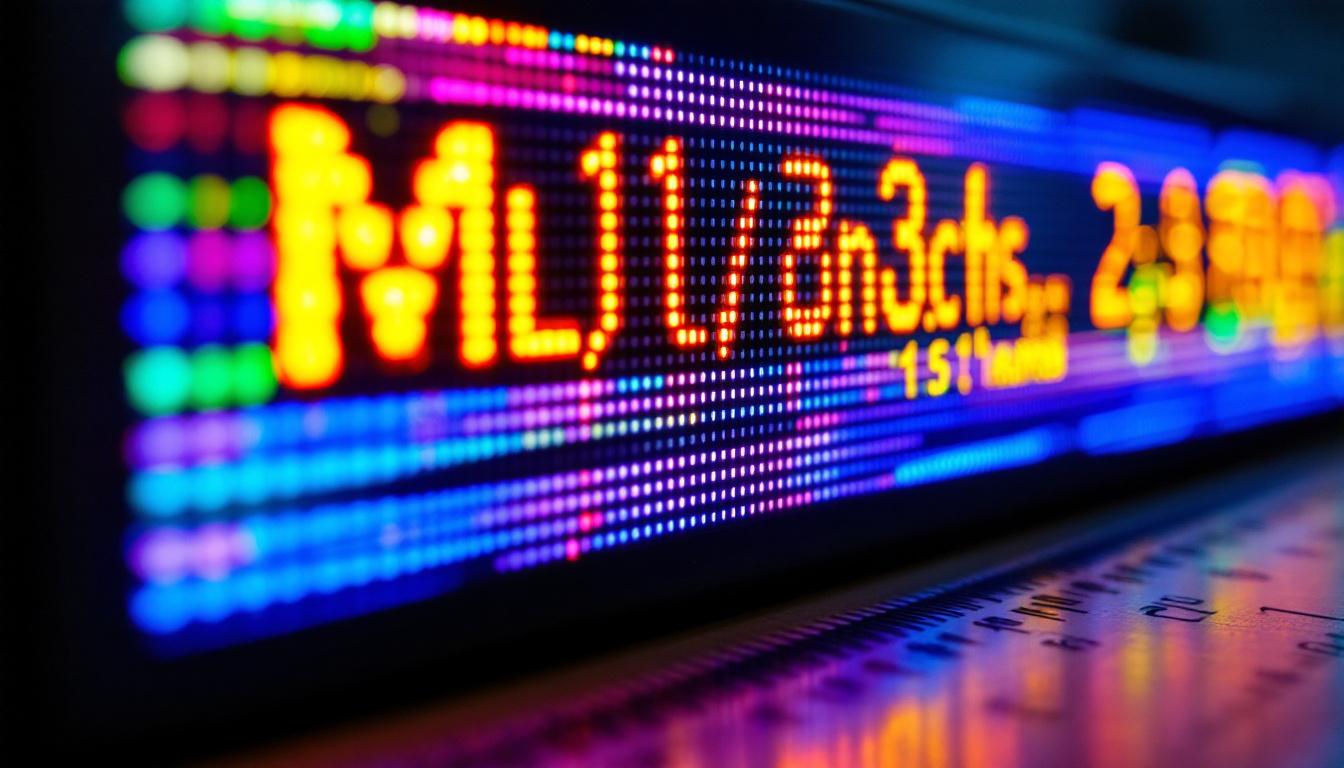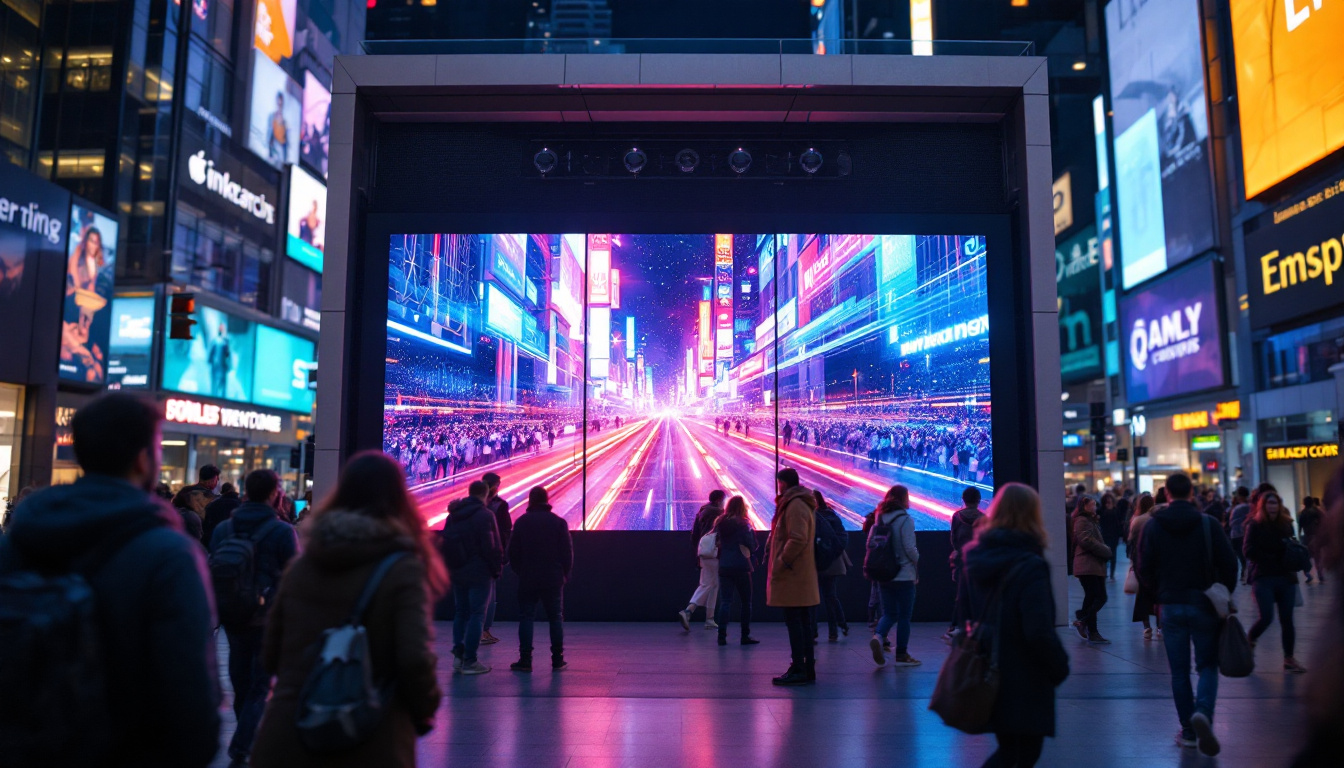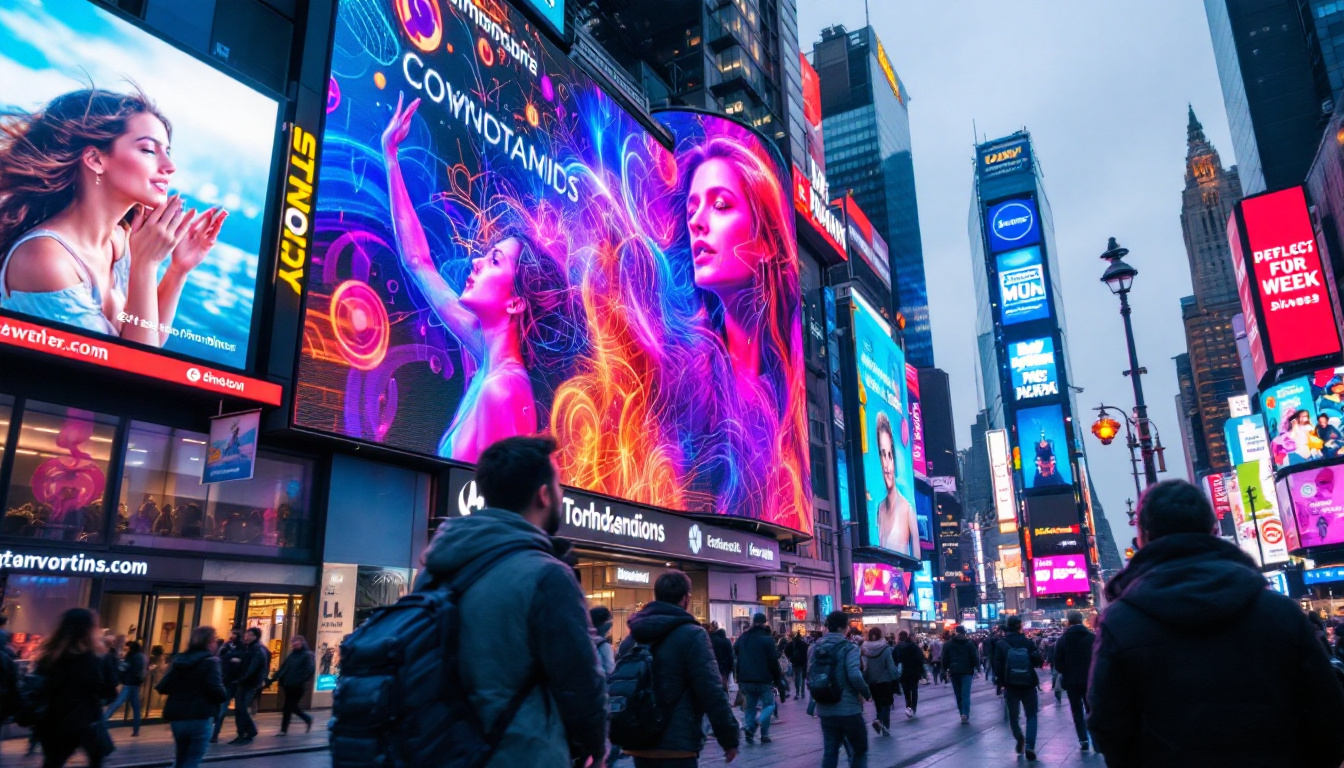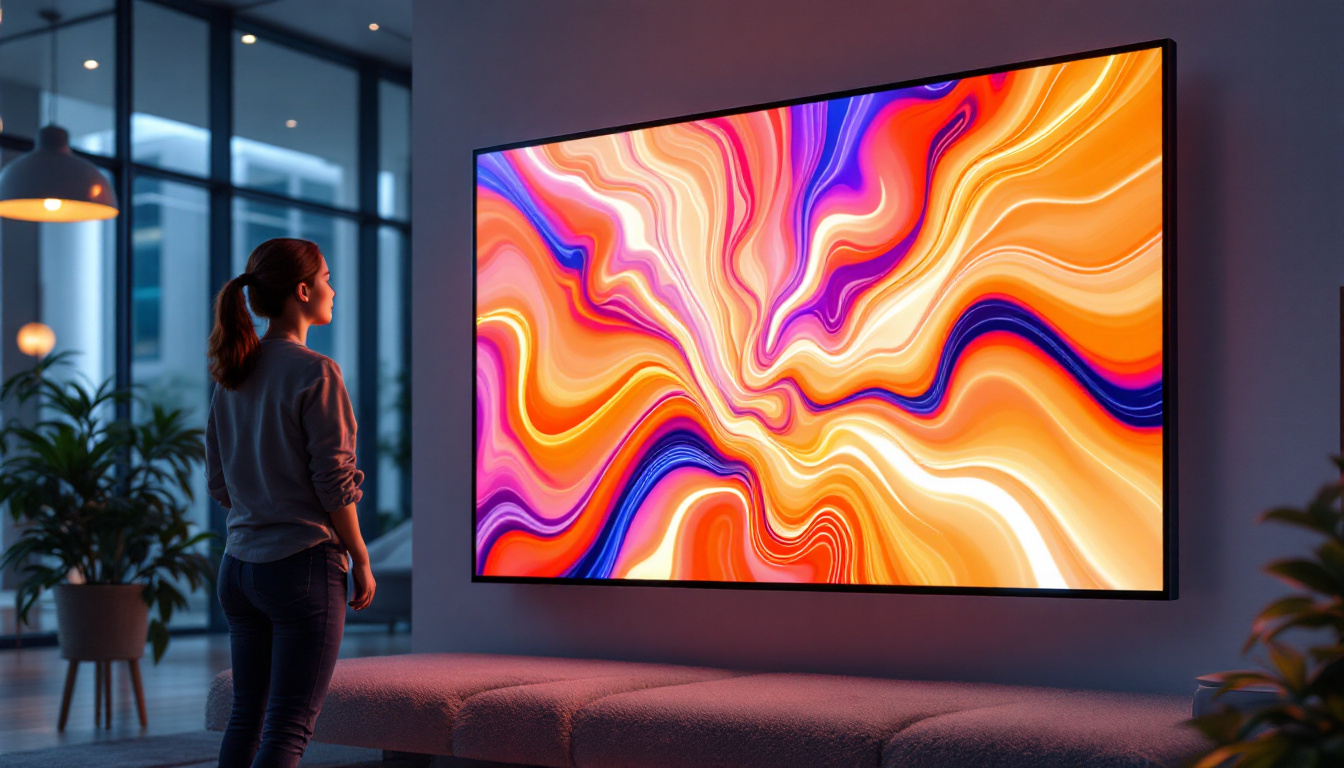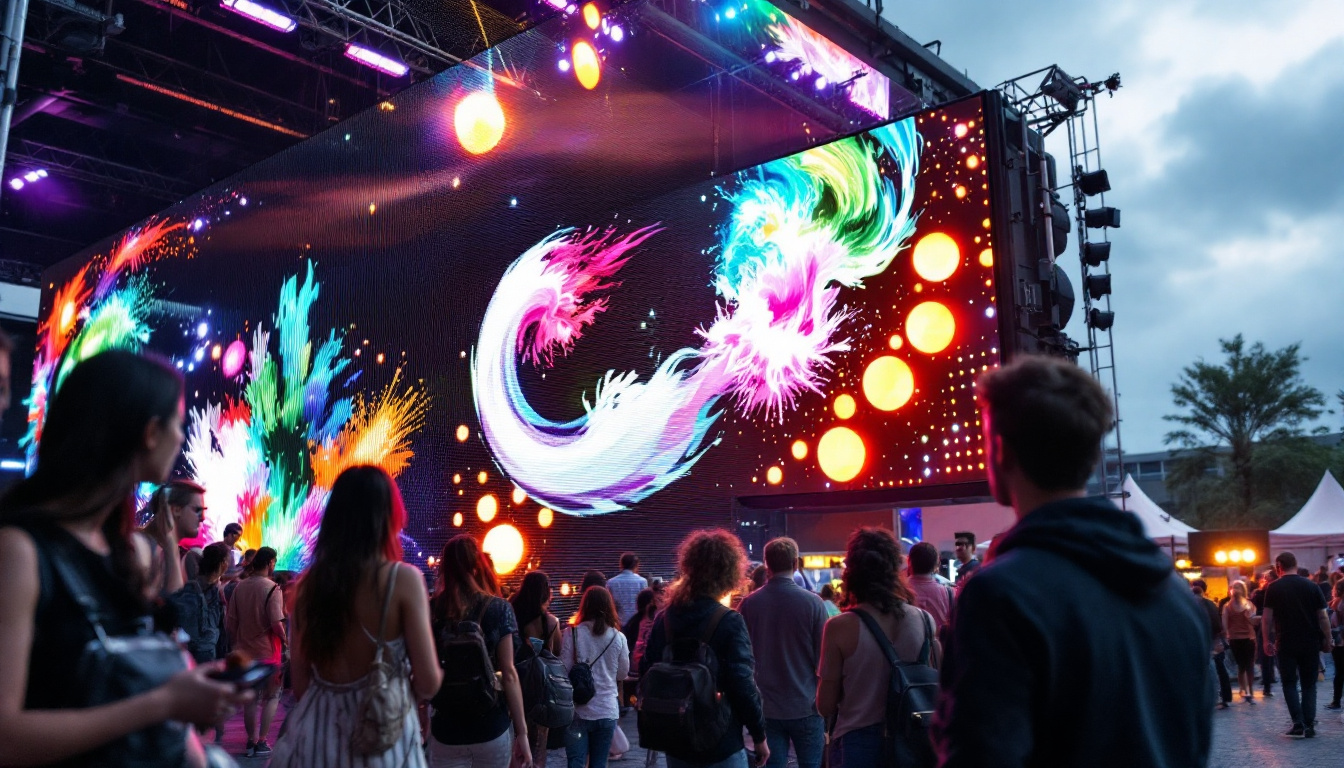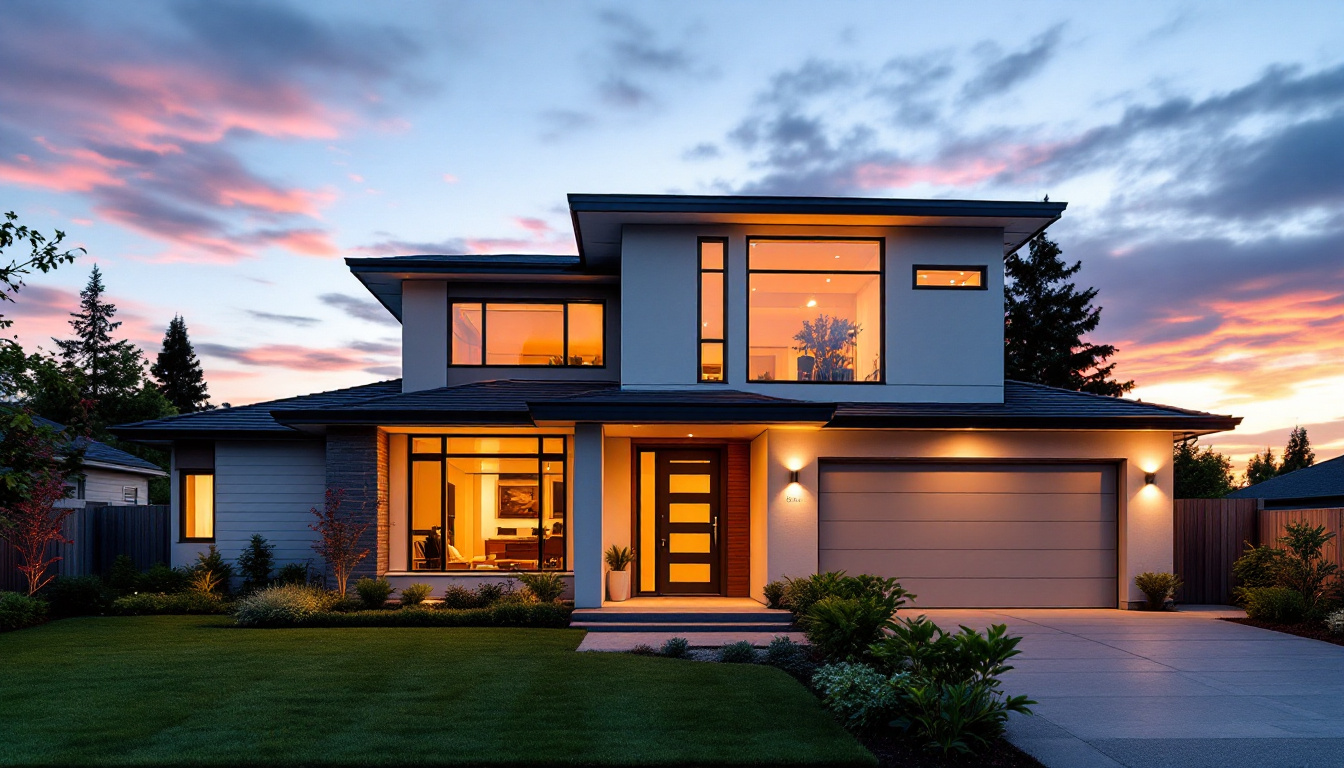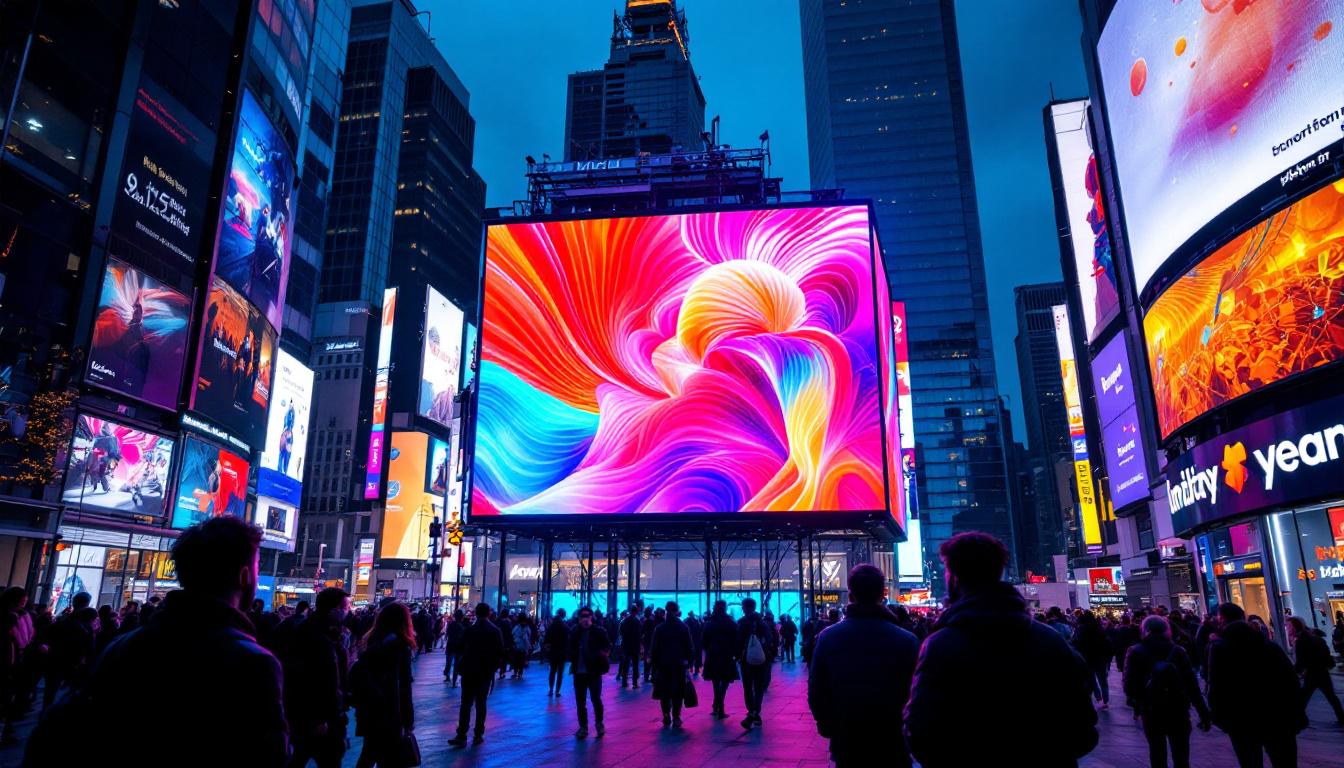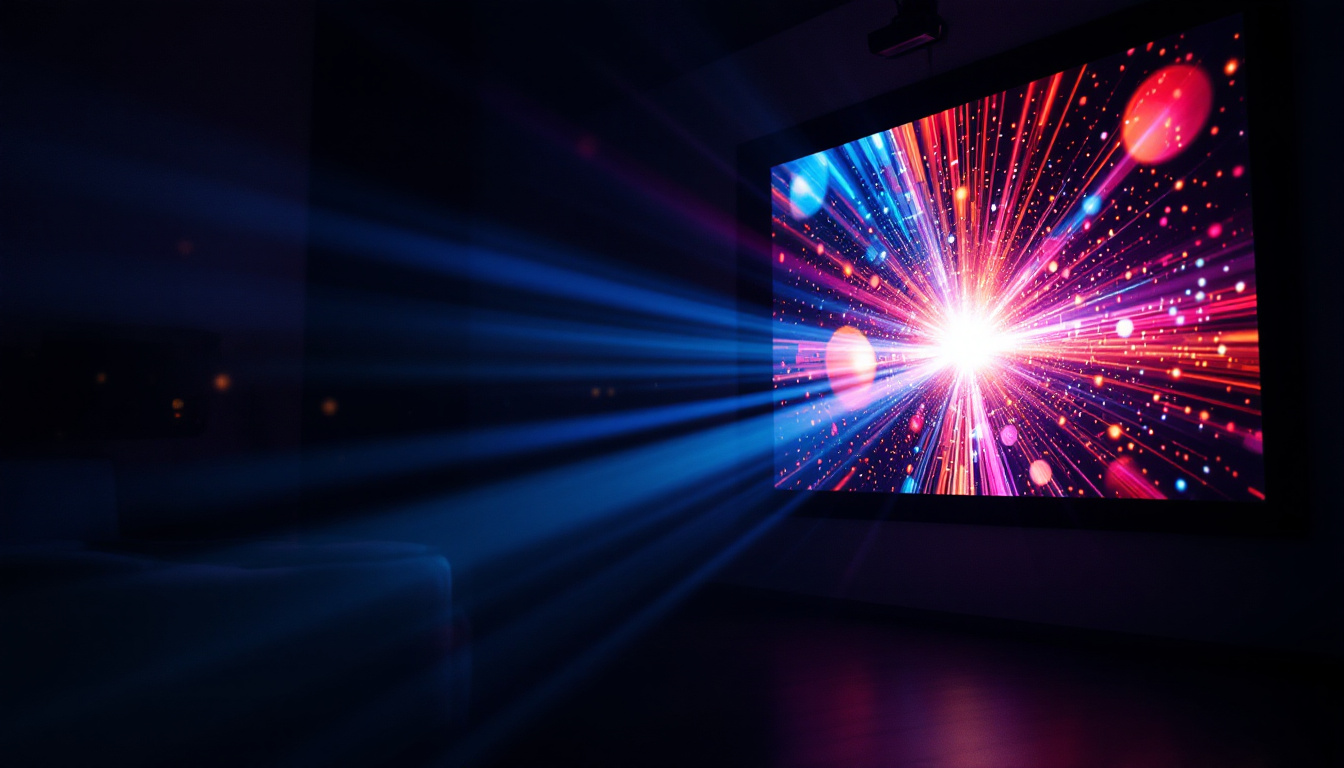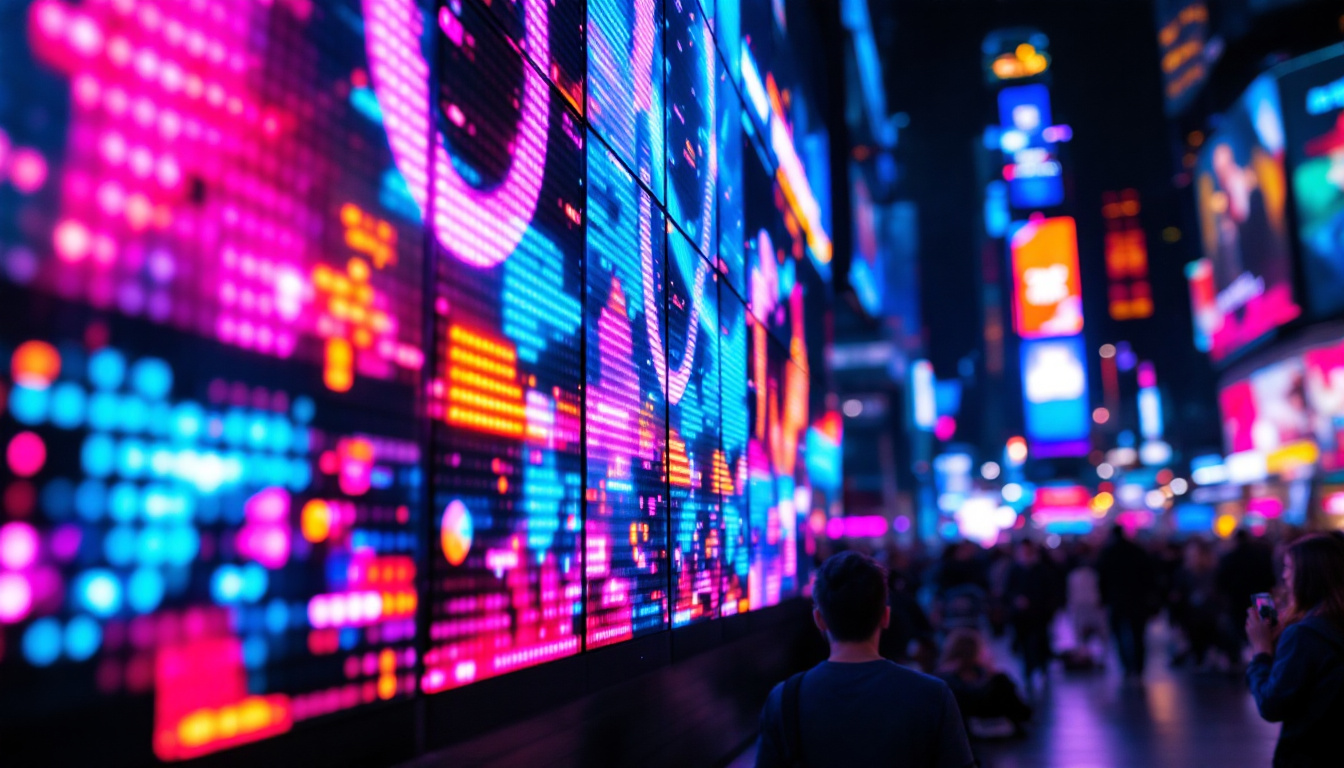In the evolving world of digital signage, outdoor LED displays have become a cornerstone for businesses, event organizers, and public spaces aiming to capture attention and communicate effectively. Among the various mounting and structural options, outdoor lattice panels have emerged as a popular and practical solution. This article delves into the concept of outdoor lattice panels for LED displays, exploring their design, benefits, applications, and technical considerations to provide a comprehensive understanding of this innovative technology.
What Are Outdoor Lattice Panels?
Outdoor lattice panels are specialized frameworks designed to support LED display modules in open-air environments. Unlike traditional solid panels, lattice panels feature a grid-like structure that allows for enhanced airflow and reduced wind resistance. This design not only improves the durability and stability of the LED display but also contributes to its overall performance and longevity.
Typically constructed from lightweight yet robust materials such as aluminum or steel, these panels serve as the skeleton on which LED modules are mounted. The lattice configuration provides multiple attachment points, facilitating easier installation and maintenance. This modular approach is particularly advantageous for large-scale displays, where flexibility and scalability are essential.
Design Characteristics of Lattice Panels
The lattice design is characterized by a series of intersecting bars or strips arranged in a crisscross pattern. This open framework reduces the surface area exposed to wind, minimizing the risk of structural damage during adverse weather conditions. Additionally, the gaps within the lattice allow natural ventilation, preventing overheating of the LED components—a critical factor in outdoor installations.
Another important design aspect is the panel’s weight. Outdoor lattice panels are engineered to be lightweight without compromising strength. This balance simplifies transportation, handling, and installation, especially in locations that are difficult to access or require temporary setups.
Moreover, the aesthetic versatility of lattice panels cannot be overlooked. They can be customized in various colors, finishes, and sizes to complement the surrounding environment, making them suitable for a wide range of applications—from sporting events and concerts to advertising displays in urban settings. The ability to blend functionality with visual appeal makes these panels a popular choice among event organizers and advertisers alike. Additionally, the open structure of lattice panels can be adorned with decorative elements or integrated with lighting features, further enhancing their visual impact while maintaining the essential performance attributes.
Furthermore, outdoor lattice panels are often designed with sustainability in mind. Many manufacturers are now using recycled materials in their construction, which not only reduces the environmental footprint but also appeals to eco-conscious consumers. This trend towards sustainability extends to the manufacturing processes as well, where energy-efficient techniques are employed to minimize waste. As the demand for greener solutions in outdoor advertising and display technology grows, lattice panels represent a forward-thinking choice that aligns with modern environmental values.
Advantages of Using Outdoor Lattice Panels for LED Displays
Choosing the right mounting structure for an outdoor LED display can significantly impact its performance and maintenance costs. Outdoor lattice panels offer several distinct advantages that make them an attractive option for various applications.
Enhanced Durability and Weather Resistance
One of the primary benefits of lattice panels is their ability to withstand harsh weather conditions. The open lattice structure reduces wind load by allowing air to pass through, which is crucial in preventing damage during storms or high winds. This design reduces the strain on mounting hardware and the building or structure supporting the display.
Moreover, materials like powder-coated aluminum or galvanized steel used in lattice panels provide excellent resistance to corrosion and rust. This ensures that the panels maintain their structural integrity and aesthetic appeal over many years, even when exposed to rain, snow, and UV radiation.
Improved Cooling and Energy Efficiency
LED displays generate heat during operation, and managing this heat is vital to maintaining optimal performance and extending component lifespan. The lattice framework facilitates natural airflow around the LED modules, allowing heat to dissipate more effectively than solid-backed panels.
Improved cooling reduces the reliance on additional cooling systems, which can be costly and require regular maintenance. Consequently, lattice panels contribute to lower energy consumption and operational costs, making them a sustainable choice for outdoor digital signage.
Ease of Installation and Maintenance
Outdoor lattice panels are designed with modularity and accessibility in mind. Their grid structure allows for easy mounting of LED modules, simplifying the assembly process. This modularity also means that individual LED panels can be replaced or serviced without dismantling the entire display, reducing downtime and maintenance expenses.
Furthermore, the lightweight nature of lattice panels enables quicker installation, which is especially beneficial for temporary events or seasonal advertising campaigns. The ability to rapidly deploy and dismantle the display adds to the versatility of this solution.
Applications of Outdoor Lattice Panel LED Displays
Outdoor lattice panel LED displays are versatile and find applications across a range of industries and settings. Their unique combination of durability, performance, and ease of use makes them suitable for both permanent and temporary installations.
Advertising and Digital Billboards
One of the most common uses of outdoor lattice panel LED displays is in advertising. Digital billboards equipped with lattice panels can be installed on building facades, rooftops, or standalone structures. The ability to withstand environmental stressors while delivering bright, high-resolution content makes them ideal for capturing the attention of pedestrians and motorists alike.
According to recent market research, the global digital billboard market is expected to grow at a compound annual growth rate (CAGR) of over 7% through 2027, driven by increasing demand for dynamic and targeted advertising. Outdoor lattice panels play a critical role in supporting this growth by enabling larger, more resilient displays.
Sports and Entertainment Venues
Sports arenas, concert venues, and outdoor festivals often rely on large LED displays to enhance the spectator experience. Lattice panels are particularly well-suited for these environments due to their ease of assembly and ability to handle the rigors of outdoor exposure.
For example, temporary LED screens constructed with lattice panels can be quickly erected for a sporting event and dismantled afterward, providing a cost-effective solution without sacrificing quality or visibility. Their lightweight design also facilitates transportation between venues.
Public Information and Transportation Hubs
Public spaces such as airports, train stations, and city squares utilize outdoor LED displays to disseminate real-time information, advertisements, and emergency alerts. Lattice panel structures ensure that these displays remain operational and visible in all weather conditions.
The transparency of lattice panels also allows for integration with architectural elements, preserving the aesthetic of historic or sensitive locations while delivering modern digital content.
Technical Considerations for Outdoor Lattice Panel LED Displays
Implementing an outdoor LED display using lattice panels requires careful planning and technical expertise. Several factors must be considered to ensure optimal performance, safety, and compliance with local regulations.
Structural Engineering and Wind Load Analysis
Given the exposure to environmental forces, it is essential to conduct thorough structural engineering assessments before installation. Wind load analysis helps determine the appropriate lattice panel design, material thickness, and mounting methods to prevent structural failure.
Engineers use computational fluid dynamics (CFD) simulations and wind tunnel testing to predict how the lattice panel will behave under various weather scenarios. These analyses inform decisions about panel spacing, reinforcement, and anchoring systems.
Pixel Pitch and Resolution
The choice of LED modules for lattice panel displays depends on the intended viewing distance and content type. Pixel pitch—the distance between individual LED pixels—directly influences the resolution and clarity of the display.
For outdoor advertising visible from highways or large public spaces, a pixel pitch ranging from 10mm to 20mm is common. Closer viewing applications may require finer pixel pitches, but this increases the cost and complexity of the display. Lattice panels must be compatible with the selected modules to ensure secure mounting and alignment.
Weatherproofing and IP Ratings
LED modules and lattice panels must meet specific ingress protection (IP) ratings to withstand dust, moisture, and other environmental factors. Typically, outdoor LED displays require a minimum rating of IP65, indicating complete protection against dust and water jets.
The lattice structure itself, while open, is designed to support LED modules that are sealed and weatherproofed. Additionally, connectors, cables, and power supplies must be housed in protective enclosures to prevent damage and ensure reliable operation.
Power Supply and Data Connectivity
Reliable power and data transmission are critical for outdoor LED displays. Lattice panels facilitate cable management by providing multiple pathways and attachment points, reducing the risk of cable damage and simplifying troubleshooting.
Power supplies should be rated for outdoor use and equipped with surge protection to guard against electrical faults caused by lightning or grid fluctuations. Data connectivity options include wired Ethernet, fiber optics, or wireless solutions, depending on the installation environment and content delivery requirements.
Future Trends and Innovations in Outdoor Lattice Panel LED Displays
The outdoor LED display industry continues to evolve, with innovations aimed at enhancing performance, sustainability, and user experience. Outdoor lattice panels are adapting alongside these trends to meet emerging demands.
Integration of Smart Technologies
Smart LED displays equipped with sensors and IoT connectivity enable dynamic content adjustments based on environmental conditions, audience demographics, or real-time data feeds. Lattice panel structures are increasingly designed to accommodate these additional components without compromising structural integrity.
Advancements in Materials and Manufacturing
New materials such as carbon fiber composites and advanced aluminum alloys are being explored to reduce weight further while increasing strength. Additive manufacturing techniques, including 3D printing, offer the potential for customized lattice designs tailored to specific site requirements.
Energy Efficiency and Sustainability
With growing emphasis on environmental responsibility, manufacturers are developing LED modules with higher luminous efficacy and lower power consumption. Combined with the natural cooling benefits of lattice panels, these advances contribute to greener digital signage solutions.
Conclusion
Outdoor lattice panels represent a sophisticated and effective approach to mounting LED displays in challenging environments. Their unique design offers significant advantages in durability, cooling, installation, and maintenance, making them a preferred choice for a wide range of applications from advertising to public information systems.
Understanding the technical and practical aspects of lattice panel LED displays is essential for stakeholders looking to invest in outdoor digital signage. As technology advances and market demands evolve, outdoor lattice panels will continue to play a pivotal role in delivering vibrant, reliable, and sustainable LED display solutions.
Discover LumenMatrix LED Display Solutions
Ready to elevate your outdoor space with advanced LED display technology? LumenMatrix is at the forefront of innovation, offering a diverse range of LED display solutions tailored to your needs. From immersive Indoor LED Walls to dynamic Outdoor LED Wall Displays, and from versatile Vehicle LED Displays to engaging LED Sports Displays, our products are designed to captivate and communicate with unparalleled clarity. Embrace the future of visual storytelling with LumenMatrix. Check out LumenMatrix LED Display Solutions today and transform your message into an unforgettable visual experience.

